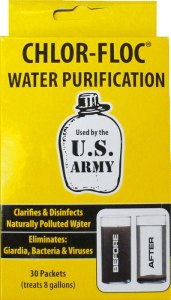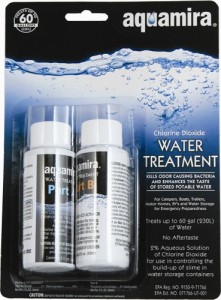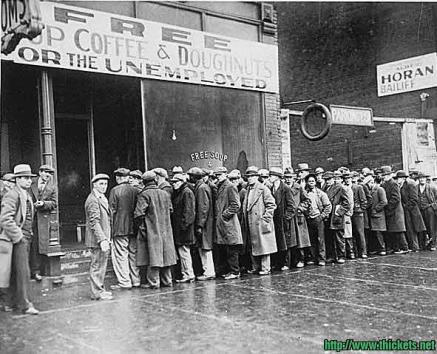WATER PURIFICATION INFORMATION
Boiling Is Best
Short of using a very high-quality water filter, this is the most reliable method for killing microbes and parasites. Bring water to a rolling boil and keep it simmering for at least several minutes. Add one minute of boiling to the initial 10 minutes for every 1,000 feet above sea level. Cover the pot to shorten boiling time and conserve fuel. The flat taste of boiled water can be improved by pouring it back and forth from one container to another (called aeration), by allowing it to stand in a closed container for a few hours, or by adding a small pinch of salt for each quart of water boiled.
When boiling is not practical, chemical disinfection should be used. Common household bleach contains a chlorine compound that will disinfect water. The treated water should be mixed thoroughly and allowed to stand, preferably covered, for 30 minutes. The water should have a slight chlorine odor; if not, repeat the dosage and allow the water to stand for an additional 15 minutes. If the treated water has too strong a chlorine taste, it can be made more pleasing by allowing the water to stand exposed to the air for a few hours or by pouring it from one clean container to another several times.
Guide to using 1% Bleach to disinfect water
(Clorox Bleach like you buy to do laundry or scrub/disinfect bathrooms, etc.)
First let water stand until particles settle. Filter the particles if necessary with layers of cloth, coffee filters, or fine paper towels. Pour the clear water into an uncontaminated container and add Regular Clorox Bleach per the below indicated ratio. Mix well. Wait 30 min. Water should have a slight bleach odor. If not, repeat dose. Wait 15 min. Sniff again. Keep an eyedropper taped to your emergency bottle of Clorox Bleach, since purifying small amounts of water requires only a few drops. Bleach must be fresh for best use and results. See below suggestions for storage bottle replacement.
Don’t pour purified water into contaminated containers. Sanitize water jugs first.
Without water and electricity, even everyday tasks are tough. In lieu of steaming hot water, sanitize dishes, pots and utensils with a little Clorox Bleach. Generic Bleach is fine as long as it is 1%.
Ratio of Clorox Bleach to Water for Purification
2 drops of Regular Clorox Bleach per quart of water
8 drops of Regular Clorox Bleach per gallon of water
1/2 teaspoon (or 40 drops) Regular Clorox Bleach per 5 gallons of water
1 teaspoon (or 80 drops) Regular Clorox Bleach per 10 gallons of water
If water is cloudy, double the recommended dosages of Clorox Bleach.
Only use Regular Clorox Bleach (not Fresh Scent or Lemon Fresh). To insure that Clorox Bleach is at its full strength, rotate or replace your storage bottle minimally every three months. If using old (or unknown age bleach)- double the recommended dosages of bleach.
Clorox Bleach Sanitizing Solution
To sanitize containers and utensils, mix 1 tablespoon Regular Clorox Bleach with one gallon of water. Always wash and rinse items first, then let each item soak in Clorox Bleach Sanitizing Solution for 2 minutes. Drain and air dry.
Guide to Using Tinctures of Iodine to Disinfect Drinking Water
- Iodine in clear water: 5 drops of 2% tincture of iodine per quart of clear water
- Iodine in cloudy water: 10 drops of 2% tincture of iodine per quart of cloudy water
- Other water disinfectant products based on iodine: the label will indicate the number of capfuls of disinfectant to use per quart of water
- Iodine tablets, such as PotableAqua™ – (50 tablets per bottle) two tablets treats a quart of water and are effective against Giardia lambia.
- Tincture of iodine: If you have no iodine tablets but have liquid iodine such as would be used to treat a wound, (typically this is a 2% tincture of iodine) try a teaspoon of iodine in a gallon of water.
- Do not use iodine to purify water for certain people:
- people who are allergic to iodine – possibly including people allergic to shellfish
- people who have a thyroid disorder
- people who are taking lithium (a medication)
- women over fifty and women who are pregnant (without a doctor’s advice)
High-Test Granular Calcium Hypochlorite (Powdered Swimming Pool Chlorine)
In granular formation, this chemical is used to clean the water in pools and hot tubs. In a pinch, you can use it as part of a two-step process to purify drinking water. First, you dissolve the calcium hypochlorite in a smaller amount of water to create a hyper-chlorinated solution. The U.S. Army Center for Health Promotion and Preventive Medicine suggests using a heaping tablespoon of calcium hypochlorite in 2 gallons of water. Once it’s dissolved, that solution can then be added to your main supply of water to disinfect it. The suggested ratio here is 1 part chlorine solution to 100 parts water, or use it like normal Household Bleach at this point, using the disinfectant ration above.
Wait Time & Water Temperature when adding a disinfectant, before drinking the water
- Typical wait time before drinking treated water is at least 30 minutes from the time that the treatment tablet has become fully dissolved in the water. The necessary time could be longer.
- Water temperature should be 65 degF or higher before treatment with bleach for best results. You may be able to warm your water by placing it in the sun. If the water is below 40 deg.F. you should double the wait time before consuming it.
- Water temperature should be 68 degF or higher before treating it with iodine. Iodine is more effective than bleach in killing off Giardia contamination in water.
- Be sure to read the instructions. Iodine, bleach (sodium hypochlorite), or other water disinfectants will require some wait time to permit the chemical to act on water bacteria before the water can be consumed.
- Using any chemical to sterilize water will require sufficient contact time between the chemical and the water before the water can be consumed.
- The chemical, bleach, or iodine, needs time to kill the microorganisms in the water.
- If you have iodine tablets intended for purifying water, the tablet bottle label should indicate the number of tablets to use per gallon of water and also the length of time that you must let the water sit before drinking it.
- If using liquid iodine to purify water, let the treated water sit for a day before using it to drink, if you can.
- If your water supply is very cold you will need to increase the wait time for the chemical disinfectant to act before the water can be consumed.
- If your water supply is cloudy you will need to increase the wait time for the chemical disinfectant to act before the water can be consumed. That’s why experts recommend filtering the water with a clean cloth first if you can. In an emergency you might also be able to use clean coffee filters or even plain white paper towels, or fabric like your shirt or socks, or a bandana.


